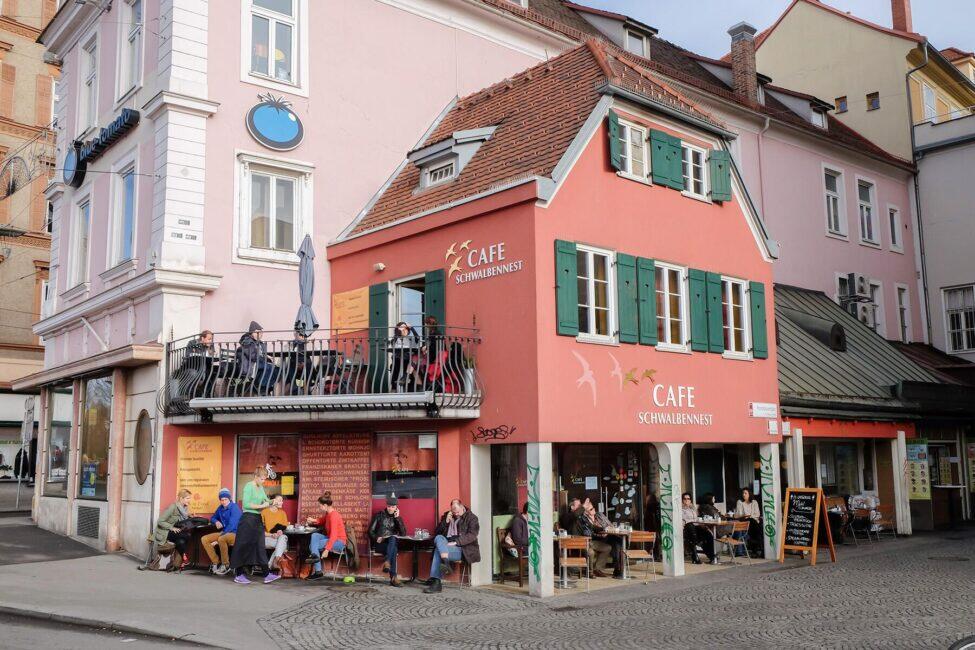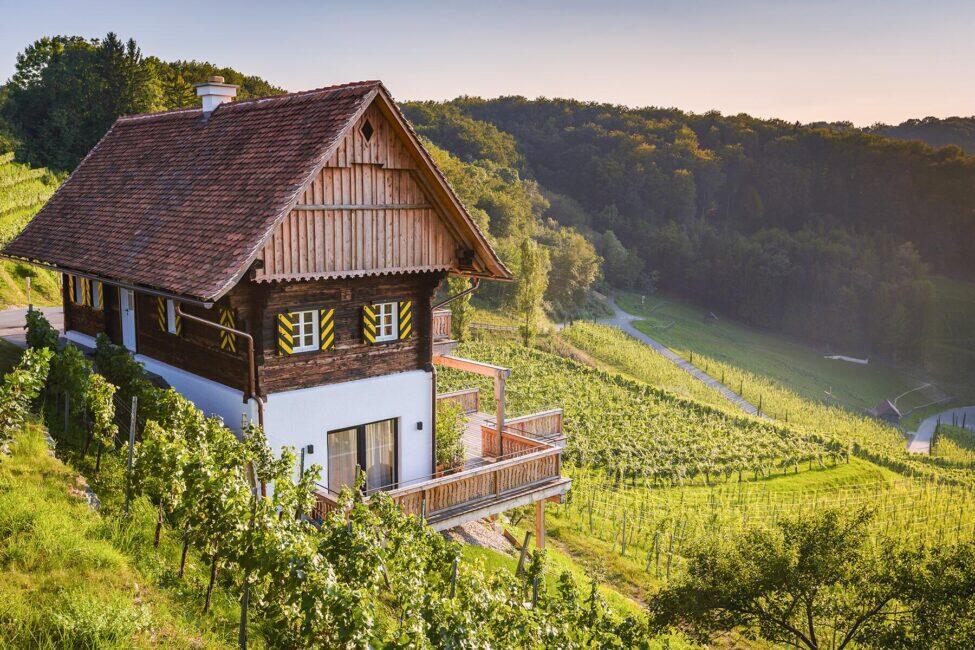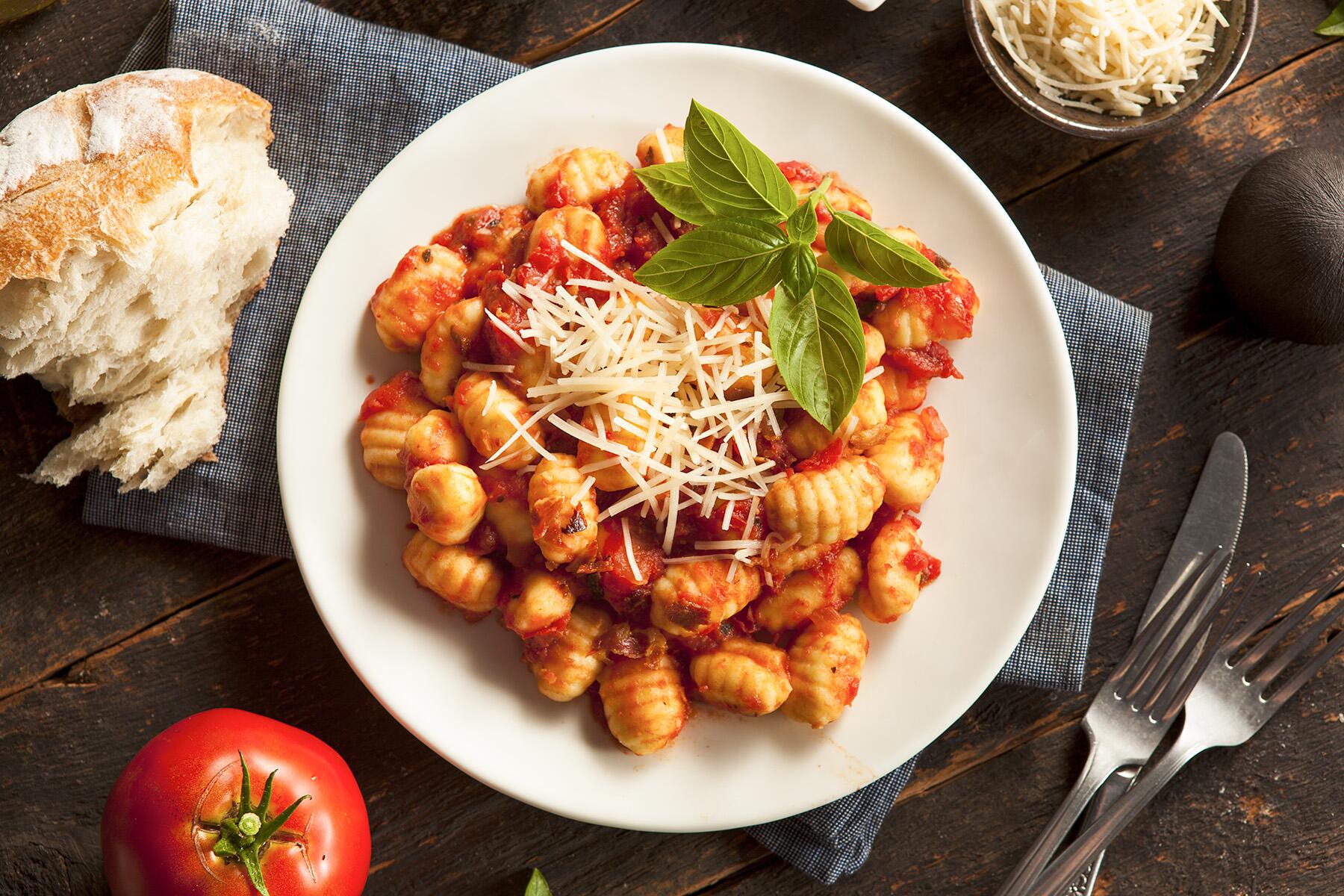“Styria is the ‘green heart’ of Austria, where culinary diversity and ‘pleasure essentials’ are most pronounced.”
Styria, in southern Austria, is known for the country’s most famous export: Arnold Schwarzenegger. When images of his storybook birthplace—from its basalt crags to sunny vineyard slopes, sprawling green farms, and moody forests—appeared in the 2023 Netflix docuseries Arnold, the region saw a 40% uptick in vacation bookings. But Styria isn’t just for diehard Governator fans.
The best reason to visit is its extravagant culinary scene, from farmers markets selling just-plucked produce to forward-thinking restaurants, and a biannual five-course feast for foodies held right in the middle of capital city Graz’s picturesque Old Town.
The ‘Green Heart’ of Austria
At about 6,000 square miles, Styria is the second-largest state in Austria and its top agricultural producer, where a mild climate and rich soils translate to fresh produce from spring through autumn. “Styria is the ‘green heart’ of Austria, where culinary diversity and ‘pleasure essentials’ are most pronounced,” says Markus Hillebrand, grower of Grazer Krauthäuptel, a native lettuce whose leaves have a bright red edge, tender texture, and mildly sweet flavor. “The variety of regions, soils, and climatic conditions enable us to cultivate a wide range of products.”
Recommended Fodor’s Video
Austrian farmers have been at the forefront of the organic and quality foods movement for several decades. In 1993, they created one of the first food designations: the AMA Quality Seal, which guarantees the traceable origin of foods across the country.
But according to Beatrice Berner of Graz Tourism, when the city was dubbed the “Capital of Delight” in 2008, its gastronomic superpowers “became ingrained in collective memory.” Today, there are 350 agricultural and forestry businesses in the greater Graz area—more than in any other community in Austria.

Choose Your Own Culinary Adventure
Learning about the range of Styrian products is as simple as a trip to Kaiser Josef Market, held on Graz’s main square, Josefplatz. The largest of the many farmers markets around Styria, it features a wealth of choices. Besides familiar favorites such as tomatoes, eggplant, and carrots, you can take a deep dive into regional specialties like zesty fruit and vegetable juices, creamy Murbodner potatoes, and Vulcano ham, which is aged for at least six months, marinated in herbs, and finished with a beechwood smoking.
Geniesserei am Mark, right on Josefplatz, selects much of its foods straight from the market. Try the lightly breaded and fried Styrian branzino (European bass), and a simple yet flavorful salad of Grazer Krauthäuptel with pumpkinseeds and Styrian apple cider vinegar. According to Hillebrand, Austrians consume nearly 8 pounds per person of the lettuce each year, which is sustainably produced, with early cultivation outdoors rather than under grow lights, to save energy.
Along the café-and-boutiques-packed Stempfergasse street, stop at 91-year-old, family-run delicatessen Frankowitsch. The restaurant specializes in petite open-face sandwiches slathered with more than a dozen house-made spreads—in vegan, vegetarian, meat, fish, and gluten-free varieties. Several feature Styrian horseradish, a pungent but non-bitter version of the popular root that contains twice as much vitamin C as citrus fruit. It’s often grated over entrées, but at Frankowitsch, it’s incorporated into spreads featuring ham, curried chicken, and beets and lentils.
Austrians are brilliant bakers, as evidenced by Styria’s many savory breads and sweets. Just a five-minute walk from Frankowitsch, Hofbäckerei Edegger-Tax, founded in 1569 and the oldest operating bakery in Graz, is the best of both worlds. The bakery crafts several types of Styrian breads, including Grazer Herz Brot, Halbweisses, and Waldbauernbrot. The “you snooze, you lose” rule applies here, as savory breads sell out early.
Among Hofbäckerei Edegger-Tax’s top pastries are apple strudel made with local fruit, and brioche-style doughnuts with apricot filling. Don’t miss Nussecken, a triangular hybrid cookie with shortbread on the bottom and apricot jam studded with hazelnuts on the top, and half-dipped in rich dark chocolate.

The ‘Green Gold’ of Styria
From April through October, pick up a custom picnic basket at Gut Schlossberg’s downstairs local products shop, and enjoy your treats in parks such as Augarten or Hilmteich, or along the shady banks of the Mur River. Upstairs, Gut Schlossberg’s restaurant serves traditional recipes such as Mostsuppe, a soup made with cider and East Styrian apples. Or try scarlet runner beans—a large, deep purple-and-white-speckled legume often served as a side dish, tossed oil pressed from the seeds of a native pumpkin.
Pumpkinseed oil, sometimes called “green gold”—both for its gorgeous yellowish-evergreen hue and its value to Styria—is the most sought-after product of the region. Pumpkinseed oil has been produced at least since the 18th century, and in 1998 was given Protected Geographical Indications (PGI) status, noted on the label as Gemeinschaft Steirisches Kürbiskernöl g.g.A.
According to Reinhold Zötsch who represents the Styrian Pumpkinseed Oil Association, the oil is primarily made from Cucurbita pepo L. styriaca, a local genetic mutation of the common pumpkin that is harvested between August and September. The gourd averages 6 to 10 pounds, with a rounded shape and a striped green and orange or golden exterior.
About 6 pounds of the squash’s hull-less, potbellied seeds are required to make 34 ounces of oil. The seeds are first dried, then ground, kneaded with salt and water, and gently roasted. “The experience of the respective pressing master is of particular importance here,” says Zötsch. “His know-how determines when the roasting process is complete and the pressing can take place.” The fresh oil stands for several days to allow sediment to settle to the bottom, and is then strained and bottled.
Pumpkinseed oil is used mostly in cold dishes, such as salads, or as a finish over soups and entrees, where it imparts a fresh, nutty flavor. You’ll even find it drizzled over vanilla ice cream, as a uniquely savory counterpoint to the sweet treat. Do an oil tasting at Stainzerbauer Guesthaus to learn about the different types and makers.

Wine for Miles and Festivals for Foodies
The smallest of Austria’s three major wine-growing regions, Styria has hospitable soils, a mild climate, and sloping hillsides that offer just the right amount of sunlight and exposure. It’s ideal for crisp, dry wines, drunk while still young. Whites and light reds are predominant here, like Muskateller, Traminer, Pinot Blanc, and Welschriesling. The first young white wine of the season, Steirische Junker, a blend of several varieties including Müller-Thurgau, Sämling, and Traminer, is usually served beginning in November.
Sample wines at any number of restaurants, or sip while taking in some eye candy at Café Freiblick, a small bar/restaurant on the sixth floor of Graz’s oldest department store, Kastner & Öhler. The terrace offers vintage-postcardlike views of the city, along with wines, desserts, and coffee.
Most of the year in Graz, you can take culinary walking tours, beer walks, open-top culinary bus tours, and even a Gourmet Journey at the History Museum (in German only).
If you can, plan your trip during one of Styrian’s spirited food festivals. In September, the two-day Culinary Aufsteirern festival features food, especially local games, plus regional handcrafts, Styrian dance, and music. Truffle lovers should plan a trip in October, for a celebration of the Burgundy truffle. Join a guided fungi hunt in the peaceful Leechwald Forest, visit an all-things-truffle market, or sit down to a truffle-focused menu at one of several restaurants around the city.
The mother of all Styrian food festivals is August’s Long Table of Graz. Suspended for three years during the COVID-19 pandemic, it has returned with a wildly creative five-course gastronomic extravaganza, prepared by the best chefs in the region. Against the backdrop of Graz’s Old Town, a series of long community tables provide seating for 750 foodies. A sustainable event, the Long Table shines a spotlight on regional products, with a menu that changes each year according to which products are available, and the whims of participating chefs. This year’s group dining event will emphasize accessibility, says Berner.
From the Long Table to bespoke picnics and restaurants putting a new spin on old favorites, Berner believes the Styrian culinary scene is at an exciting moment in its development. “Young, motivated chefs are constantly daring to bring fresh perspective to Styrian cuisine and participate in our projects,” she says. “In the future, our focus will be on becoming even more diverse and creating new events and offerings to showcase excellent products.”




